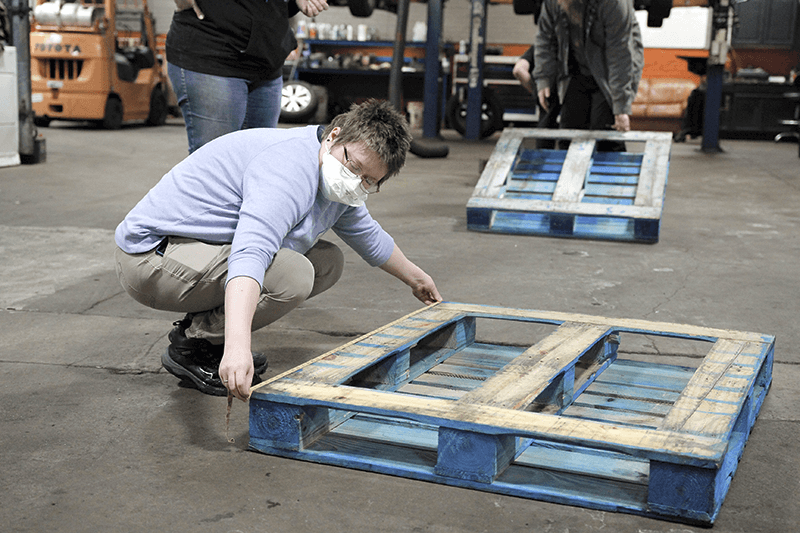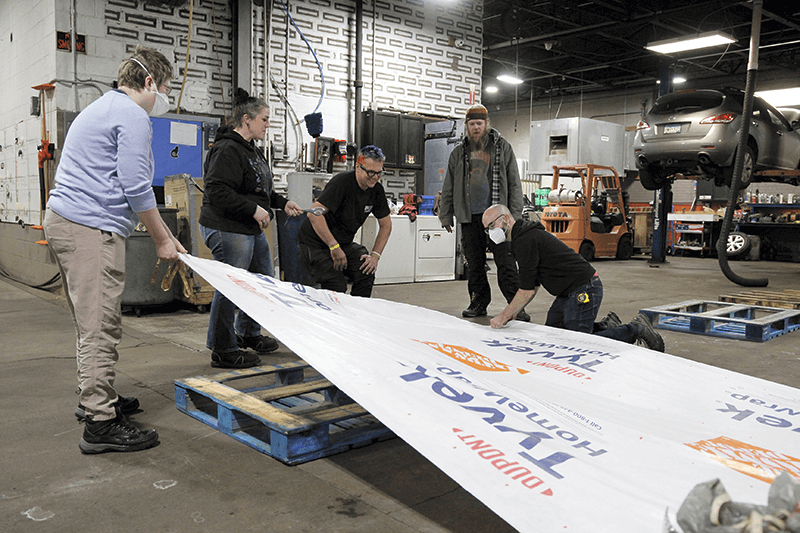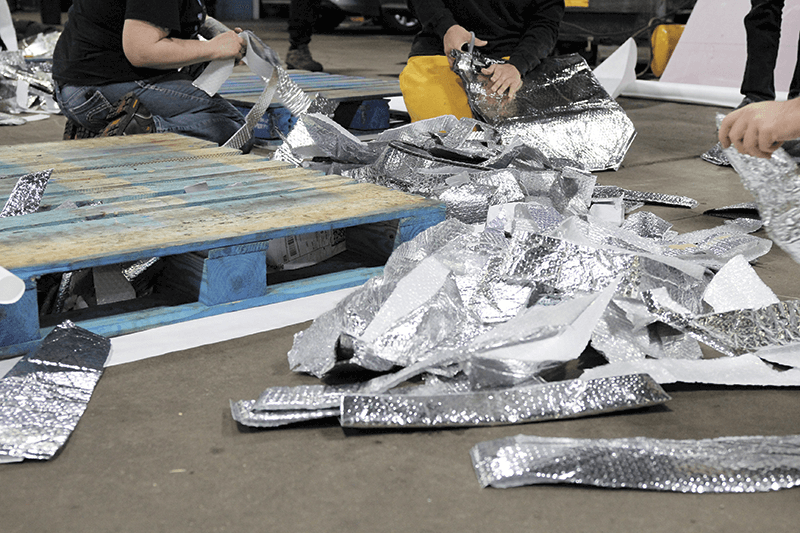The homeless encampment at The Quarry shopping center had been in limbo since the city of Minneapolis issued an order to disperse near the end of last summer, though no definitive date was given. Camping within city limits is illegal, but the camp was allowed to remain throughout the fall and into winter. The city prioritizes the removal of encampments that grow too large or have too many complaints issued, and the Quarry camp was on the small side, and mostly out of the way with few complaints; however, it has now been vacated.
Meetings where closure decisions are made are not open to the public, but insight into the process of clearing a homeless encampment was offered at a Second Precinct Advisory Council (2PAC) meeting on Dec. 12.
The city of Minneapolis has recently changed course on the kind of approach taken in clearing out homeless encampments, as outlined in a presentation from Lt. Christie Nelson of the Minneapolis Police Department to members of 2PAC. More social services personnel are on site in the days leading up to, and on the day of a clearing. Organizations such as St. Stephens Human Services, American Indian Community Development or the Hennepin County Streets to Housing program are deployed to a camp, as they are more uniquely qualified for a lot of the interpersonal work with the people there than the police department, Nelson explained.
Holly Ihrke, probation officer in the Hennepin County Attorney’s Office, said a camp closure is “orchestrated” by the land owners. The camp closure behind Target near Lake Street, for example, was requested by Metro Transit which owns the land and set the calendar. Metro Transit PD provided security for that closure.
MPD has largely switched to providing a security perimeter around the camp during the clearing. Ideally, a camp is mostly empty by the time it is cleared, and any possessions left behind are inventoried and held onto by the city until reclaimed, though they rarely are.
When a camp is cleared, space in the shelter system is offered, but not everyone in a camp makes it into one. Some move onto other camps before social services arrive, and others simply do not want to be in the shelter system for a variety of reasons, explained Ihrke. She stated that some, particularly homeless veterans, want to avoid the crowded environment within shelters.
Sometimes shelter space is available in areas that are incompatible for homeless people who still have jobs.
Many shelters do not accept people who are not sober, though the county has adopted a new “meet them where they’re at” model of housing that locates wet shelters for people with substance abuse issues to ensure they have a place while they are connected with treatment. The county and attorneys from several cities have created a system that will reduce judicial barriers for these people if a pending case would stop a landlord from renting to them.
“The city and the county are doing a lot of things that are going unnoticed,” said Ihrke.
Hennepin County’s Coordinated Entry system deals with housing for the unsheltered. They meet bi-monthly. Various grassroots organizations also help with housing. These teams go out to the camps and create referrals to housing on the spot. These teams are committed to finding shelter for campers.
As the Quarry encampment came down, other camps popped up elsewhere in the city, and activists who maintain a presence at them are doing what they can with what they have alongside, or in spite of, the official county and city response.
For example: making tent pads
A group of volunteers gathered at Turbo Tim’s Anything Automotive, 2823 Central Avenue, on Sunday, Dec. 11 to build insulated tent foundations for a newer encampment on 35th and Hiawatha. The idea was to create structures that were cheap, disposable, and made from recycled materials that could keep tents and makeshift sleeping arrangements insulated from cold, frozen ground as temperatures plunge.
Tim Suggs, owner of Turbo Tim’s, first heard volunteers were looking for building space from an online neighborhood group their St. Paul location is part of. The initial plan was to use their St. Paul workshop, but they moved to the Northeast location. Suggs said hosting events like this is how he feels his company can give the most back to the community.
“We wanted to show people an easy way they can go help out in keeping people warm,” said a volunteer who asked only to go by Andy. He expressed a degree of frustration in knowing that all the work he and other volunteers were doing that day would likely get bulldozed in the near future, but the point wasn’t longevity. “If it helps someone for even one night, it’s done its job.”
The volunteers knew that the foundations they were making would be trashed sooner rather than later, but the people in those camps are going to be sleeping outside for an indeterminate amount of time until they either find shelter, or move to another camp, so they might as well offer something to help them stay alive in the plunging winter temperatures until then.
They offered the supplies to the Hiawatha camp because it’s a newer, smaller camp that will likely be around for a little longer, and they don’t risk not having enough to go around and causing issues within the camp over who gets what.
First, they shredded up any kind of insulation material they could get their hands on – old packaging envelopes (the plastic kind that are grey inside and white outside), house insulation and bubble wrap all work well, as they are either reflective, or designed to trap air. Once the insulation was cut up, they stuffed the shreds inside of the space within shipping pallets, and then wrapped the pallets in Tyvek, which is meant to weatherproof houses. One local homeowner brought unused foam board insulation leftover from his basement renovation. Other volunteers brought in old mail packaging, the reflective lining used in grocery delivery bags for refrigerated products and bubble wrap.
Sanctuary Supply Depot, located within Boneshaker Books in South Minneapolis, accepts donations for materials that can be used to make existing camps more
winterproof.
The city of Minneapolis recommends calling 311 if you see a camp forming in your neighborhood so human services workers can connect with the people there and find them shelter as soon as possible.
Using Turbo Tim’s shop floor, one volunteer measured out the length of an old shipping pallet so a sheet of Tyvek HomeWrap could be cut to fit as a wrapper around it. Some of the insulating materials used for the tent pads. (Photos by Alex Schlee)


